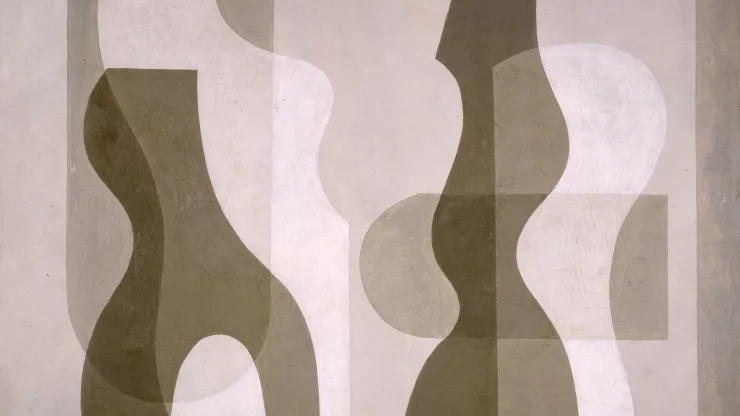As a self-proclaimed layman, I used to be intimidated by modern art. But over time, I’ve learned to appreciate and even enjoy it.
If you’re like me and want to understand modern art better, then this article is for you.
I’ll break down the key elements of modern art, decoding techniques, and even give practical tips for interpreting modern art.
Jump to Section
Introduction
Modern art can be complex, challenging, and even confusing. But it can also be beautiful, thought-provoking, and emotionally stirring.
To truly appreciate modern art, we need to understand the context, techniques, and meanings behind it.
In this article, I’ll share my layman’s perspective on modern art and provide practical tips for interpreting it.
Understanding Modern Art: A Layman’s Introduction
Why Interpretation Matters
Interpreting modern art is not just about understanding the artist’s intent or the message behind the artwork. It’s also about our own personal interpretation and emotional response to the art.
When we look at modern art, we bring our own experiences, biases, and perspectives. Interpretation matters because it helps us connect with the art on a deeper level.
The Evolution of Modern Art
Modern art encompasses a wide range of art movements and styles that emerged in the late 19th and early 20th century.
These art movements, such as Cubism, Surrealism, and Abstract Expressionism, challenged traditional notions of art and representation.
Modern art is characterized by its experimentation, innovation, and rejection of traditional techniques and styles.
Key Elements of Modern Art
To fully appreciate modern art, we need to understand the key elements that define it.
Form and Shape
Modern art often emphasizes form and shape over realistic representation. Artists use various techniques to distort and manipulate shapes, creating a sense of movement and energy.
Some common techniques include:
- Geometric shapes: Artists use geometric shapes such as squares, circles, and triangles to create a sense of order, balance, and structure.
- Organic shapes: Artists use organic shapes such as curves and loops to create a sense of flow, movement, and fluidity.
- Abstraction: Artists use abstraction to remove or simplify recognizable forms, encouraging viewers to focus on the overall composition and structure of the artwork.
Texture and Color
Texture and color play a crucial role in modern art, creating depth, contrast, and emotion. Some common techniques include:
- Impasto: Artists use thick layers of paint to create a textured surface that emphasizes the physicality of the paint and the act of painting.
- Color theory: Artists use color theory to create a harmonious or contrasting color scheme that elicits a particular emotional response from the viewer.
Lines and Movement
Modern art often employs dynamic lines and movement to create a sense of energy and vitality. Some common techniques include:
- Gestural lines: Artists use gestural lines to capture the movement of the hand and the energy of the artist. This technique often emphasizes spontaneity, freedom, and expression.
- Kinetic art: Artists use movement and mechanical elements to create art that moves and changes over time.
Space and Composition
Modern art often challenges traditional notions of space and composition, creating a sense of depth, ambiguity, and tension. Some common techniques include:
- Negative space: Artists use negative space to create a sense of emptiness or ambiguity, encouraging viewers to fill in the gaps with their own interpretation.
- Asymmetry: Artists use asymmetry to create visual tension and interest, challenging traditional notions of balance and composition.
| Key Elements | Techniques |
|---|---|
| Form and Shape | Geometric shapes, Organic shapes, Abstraction |
| Texture and Color | Impasto, Color theory |
| Lines and Movement | Gestural lines, Kinetic art |
| Space and Composition | Negative space, Asymmetry |
Decoding Modern Art: Techniques and Approaches
Interpreting modern art can be challenging, but there are various techniques and approaches that can help us decode its meaning and intent.
Abstract Art
Abstract art is characterized by its use of non-representational forms and shapes, often emphasizing color, texture, and composition over realistic representation. To interpret abstract art, we can:
- Look for patterns, symmetry, and composition.
- Focus on the emotional response and the overall mood of the artwork.
- Consider the title or the artist’s statement for clues about the intended meaning.
Expressionism
Expressionism is an art movement that emphasizes the emotional and psychological aspects of art, often using exaggerated forms, vivid colors, and distorted perspectives. To interpret Expressionist art, we can:
- Focus on the emotional intensity and the overall mood of the artwork.
- Look for symbols or elements that represent the artist’s personal experience or worldview.
- Consider the socio-political context in which the artwork was created.
Surrealism
Surrealism is an art movement that explores the unconscious mind, often using dream-like imagery, unexpected juxtapositions, and bizarre or fantastical elements. To interpret Surrealist art, we can:
- Look for elements that challenge traditional notions of reality and logic.
- Consider the psychological or symbolic meaning of the imagery.
- Learn about the artist’s interest in psychology, philosophy, or politics.
Pop Art
Pop Art is an art movement that celebrates consumer culture and mass media, often using popular imagery, bright colors, and bold graphics. To interpret Pop Art, we can:
- Consider the cultural or social context in which the artwork was created.
- Look for elements that comment on consumerism, celebrity culture, or political issues.
- Consider the artist’s intention to challenge traditional notions of art and representation.
Minimalism
Minimalism is an art movement that emphasizes simplicity, geometry, and the use of industrial materials. To interpret Minimalist art, we can:
- Focus on the simplicity and elegance of the artwork.
- Look for elements that challenge traditional notions of sculpture or painting.
- Consider the artist’s intention to create a sense of purity, clarity, and precision.
The Role of Emotion in Interpreting Modern Art
Interpreting modern art is not just about understanding the technique or the meaning behind the artwork. It’s also about our emotional response to the art and our personal interpretation of it.
Understanding the Artist’s Intentions
To understand the artist’s intentions, we can:
- Research the artist’s life, background, and cultural context.
- Look for clues in the title, the artist’s statement, or the artwork itself.
- Consider the historical or political context in which the artwork was created.
The Power of Individual Perspective
Interpreting modern art is ultimately a subjective experience, dependent on our own experiences, biases, and perspectives. To appreciate modern art from our individual perspective, we can:
- Focus on our own emotional response and personal interpretation.
- Allow ourselves to be open to different interpretations and perspectives.
- Develop our own critical and creative thinking skills.
Responding to Art on an Emotional Level
Art has the power to elicit strong emotional responses, whether it’s joy, sadness, or confusion. To respond to modern art on an emotional level, we can:
- Allow ourselves to feel the emotions evoked by the artwork.
- Express our emotions through writing, drawing, or other creative means.
- Practice mindfulness and self-reflection to better understand our emotional responses.
Practical Tips for Interpreting Modern Art
Interpreting modern art can be challenging, but with some practical tips, we can develop our interpretive skills.
Researching the Artist’s Life and Work
To better understand the artist’s intentions and the meaning behind the artwork, we can:
- Research the artist’s life, background, and cultural context.
- Read the artist’s statement or interviews about the artwork.
- Look for clues in

With a deep passion for personal development, Ben has dedicated his career to inspiring and guiding others on their journey towards self-improvement.
His love for learning and sharing knowledge about personal growth strategies, mindfulness, and goal-setting principles has led him to create My Virtual Life Coach.
Contact Ben at [email protected] for assistance.




